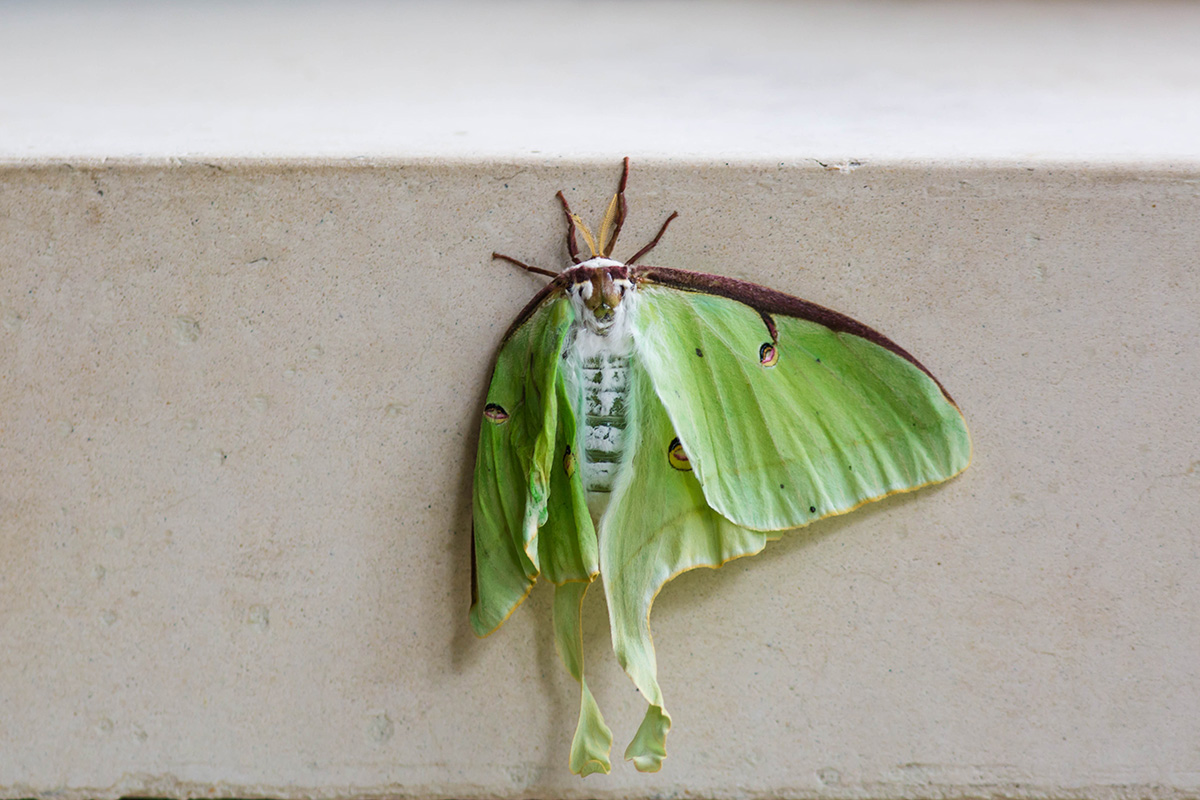Nature Notes
We’re in what you might call the summer doldrums–a time when it’s almost too hot to go outside. But if you’re brave enough to endure the humidity, there are always plenty of little treasures to be discovered in the Old Forest. All you have to do is look closely. Here are a few things we found interesting last week.
Puddle Party
After the quick but powerful thunderstorm last Thursday, the Old Forest was filled with great blue skimmer dragonflies patrolling around looking for places to lay eggs. Because most dragonflies prefer open, sunny areas, the Old Forest isn’t typically a great place to spot them. But great blues (our largest North American skimmer) actually like shadier ponds and puddles, making them one of the few species you’re likely to spot in the woods. Because they lay their eggs in water, post-rainstorm was the perfect time for them to come out to play, and dozens of them were tapping their eggs into little puddles. After the water dried up, most of them had disappeared again.
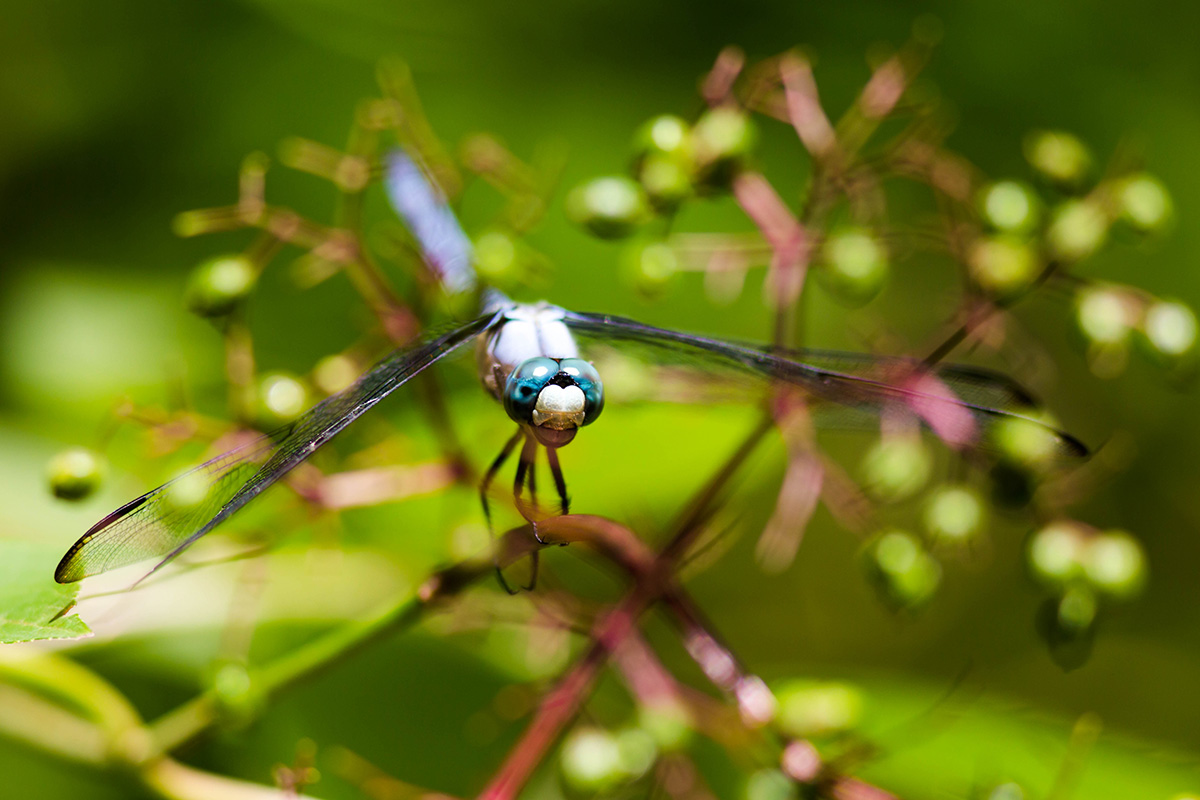
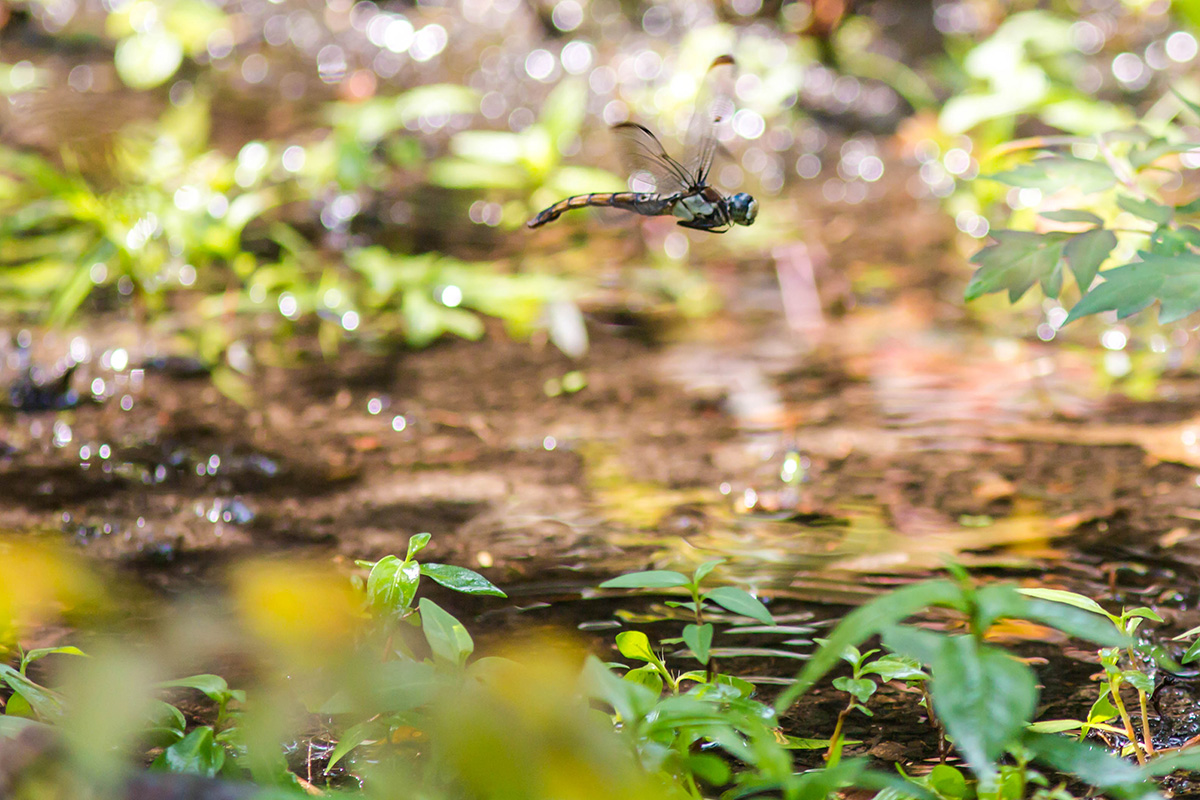
A Snail’s Place
Most of the colorful blooms in the forest are reserved for the springtime, when wildflowers bloom profusely in the small window between winter and the trees leafing out. As a consequence, I tend to pay closer attention to the few flowers that are blooming in the summertime. A few weeks ago when the American bellflowers started to pop open, I was taking photos of the blooms when I noticed a snail shell on one of the stems. Sure enough, I can find a snail in almost every patch of this flower if I stop to look. Because snails prefer decaying plant matter to fresh leaves and flowers, they’re even more pronounced now that the bellflowers are reaching the end of their bloom time. Check out a patch of bellflower on a cloudy day; snails are more likely to come out in the daytime if there’s shade, so they won’t dry out so quickly when they come out of their shells.
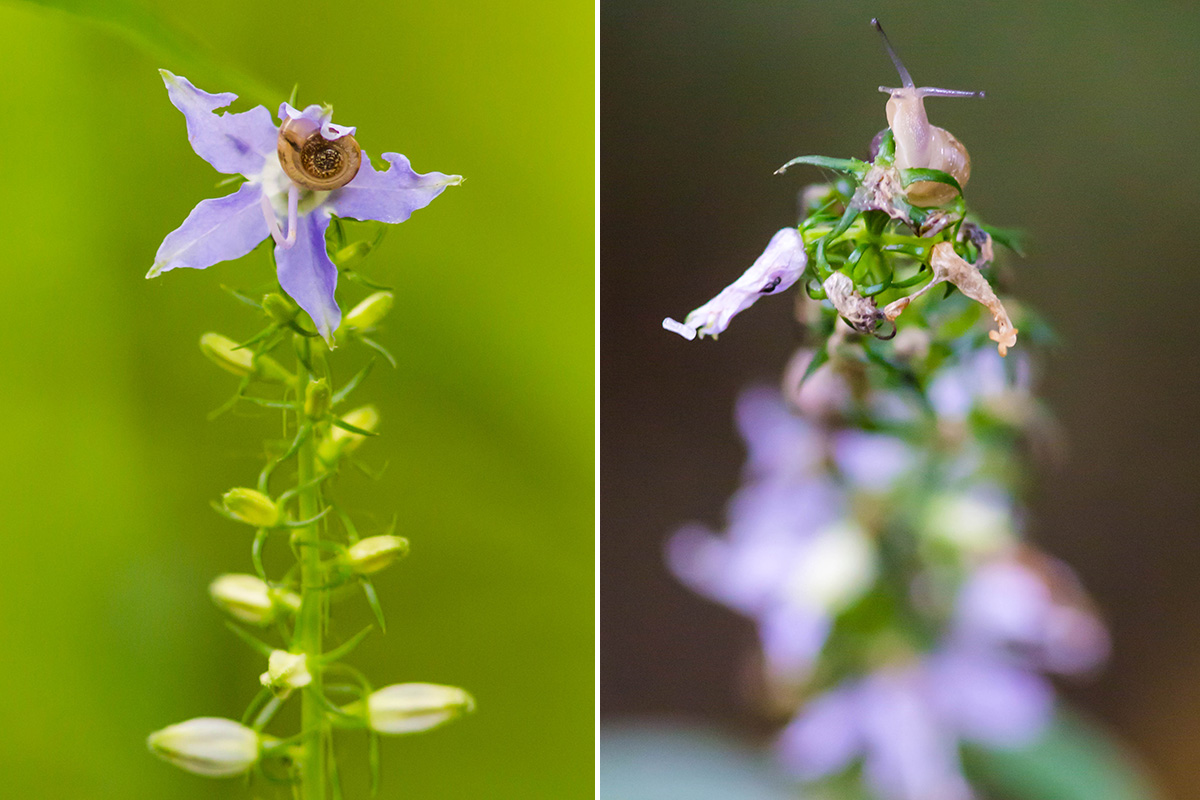
Not the Mama
I paused in my walk the other day because there was a baby bird chirping incessantly overhead. This usually means it’s feeding time, so I stopped to watch. The mother bird that came over to feed it was a Carolina wren, but the juvenile was very clearly not a wren. (For one thing, it was already larger than its parent!). It was a classic example of brown-headed cowbird nest parasitism. Cowbirds don’t built nests; instead, they pay close attention to where other birds locate their own nests, often kicking out one or more of the bird’s eggs and replacing them with their own. Sometimes, the mother bird elects to raise the cowbird baby as her own. In this case, I didn’t spot any wren babies nearby, so hopefully they had already fledged and the cowbird just needed some extra attention. It’s thought that this nest-parasitizing behavior originated because cowbirds depended on bison to trample the ground and scare up insects for them, and because the bison moved all over the place, the cowbirds would either have to abandon their nests or figure out some other way for their young to be reared. Even though they no longer have to depend on bison, the strategy seems to have worked, so they continue to employ it.
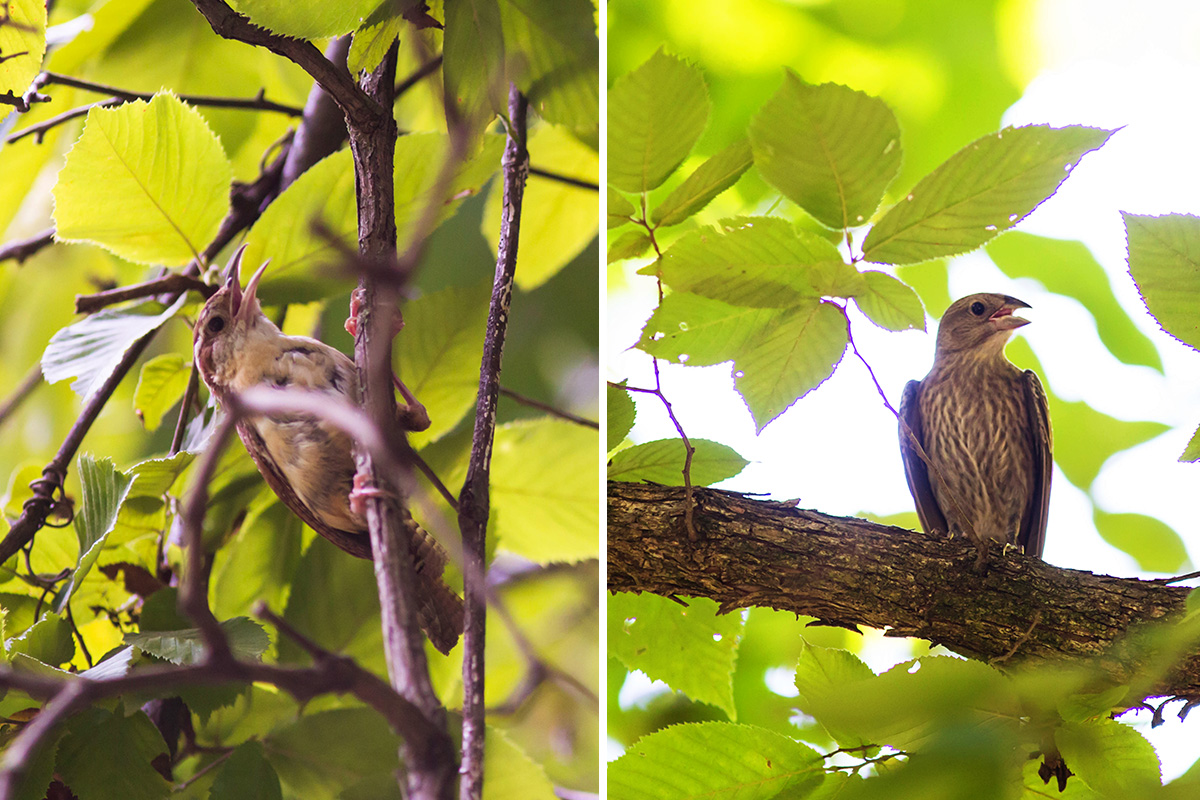
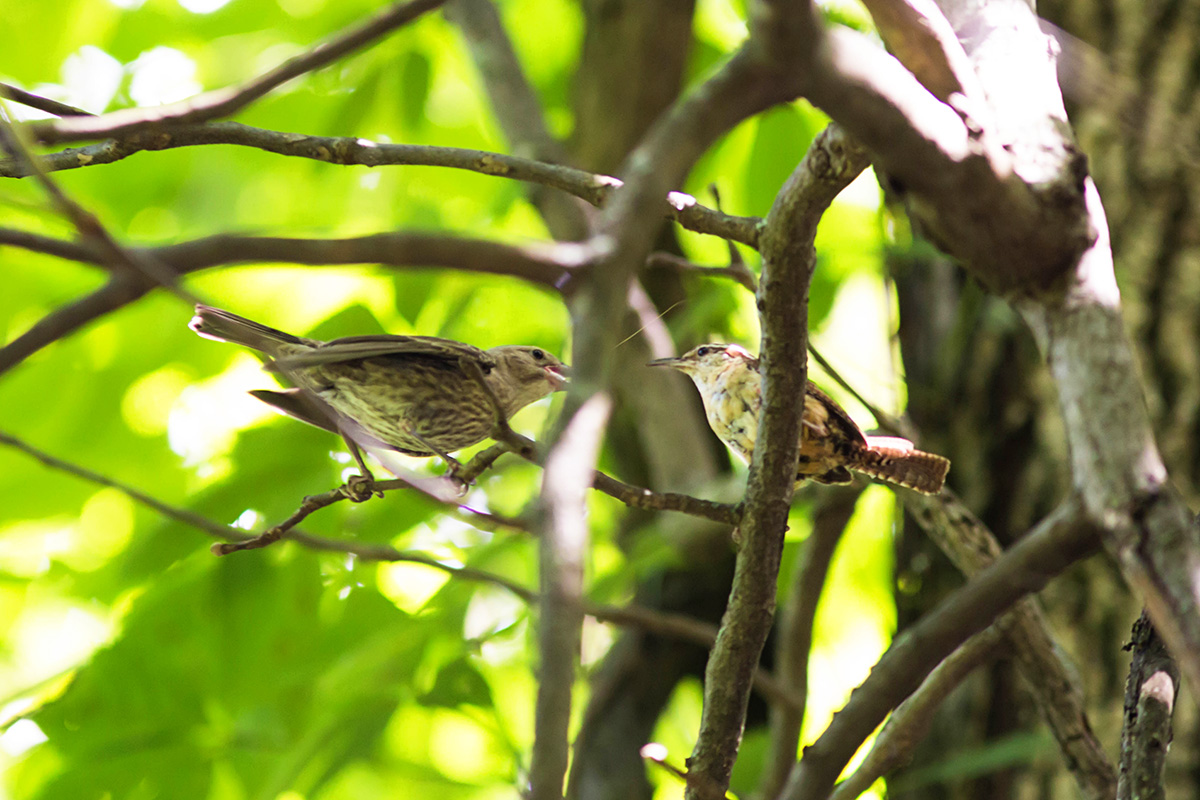
Moon Goddess
It’s not every day you see a luna moth–mostly because they’re nocturnal. While they’re fairly common, they fly at night, so they’re more typically seen flying near porchlights and storefronts than hanging out in the open during the day. This one, likely a female, was hanging up just outside the entrance to Overton Bark last week. I’m not sure whether she was attacked or whether she had a failed emergence from her cocoon, and her left wing failed to dry out. Lunas emerge in the morning and spend a day firming up their wings for flight. Because the adults don’t have mouthparts, they rely on energy from food they ate as caterpillars (which buys them only a few days of life as an adult, enough to mate and lay eggs for the next generation).

